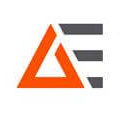Advantages of Contact Thermometers over Non-Contact/Infrared Thermometers
投稿 11月 14, 2015 によって Advanced Energy Editor
Understanding the difference between contact and non-contact temperature measurements is vital to addressing health, safety, and quality issues in a wide range of industries. The use of thermometers to measure temperature has been around for centuries and it is the second most frequently measured physical quantity after time. Various fields, including civil, mechanical, medical, manufacturing, quality control, and maintenance heavily depend on accurate temperature measurements. They provide important information such as the condition of a machine, monitor the performance of a refrigerator or air conditioner and help to determine if icing conditions exist in aircraft and agriculture. Accurate temperature monitoring ensures that processes are operating consistently under optimum conditions—resulting in improved product quality, increased safety, increased productivity, and reduced downtime.
Thermometers are mainly classified into two major categories: contact and non-contact. In contact thermometers, contact sensors measure their own temperature. Contact thermometers measure temperature using the heat transfer phenomenon known as “conduction.” They require physical contact with the measured object to bring the sensor body to the object’s temperature. While in non-contact measurements, an infrared sensor is used to measure the temperature of an object by reading the level of infrared emissions.
Contact Thermometers
Contact thermometers are classified based on the sensor type used for the measurement, i.e., the thermocouple, resistance temperature detector (RTD) or thermistor. Selecting the proper sensor type is the first important step and depends mainly on the application and additional factors like size, cost, and accuracy. Most applications have a well-defined measurement range, accuracy requirement and physical size constraints. Thermocouples are the most widely used sensors because of their low cost and wide temperature range. Applications like oven surface measurements, bedbug extermination, food/meat processing, etc. don’t require the highest accuracy, and thermocouples are a perfect fit. Various probe styles, such as gas, surface, general purpose, penetration, are available in the market and should be carefully selected based on the application requirements.
Many applications in healthcare services, fluid temperature measurements, and medical research require higher accuracy, which means RTD/thermistor sensors are often necessary in those areas. RTD/thermistor sensors are not only more accurate than thermocouples but more expensive. The wider temperature range thermocouples offer is sacrificed for higher accuracy. RTDs are among the most precise temperature sensors available, with measurement uncertainties of ±0.1 °C or better. The most popular RTD type is the 100 Ω Platinum RTD.
Non-Contact Thermometers
Non-contact thermometers, also known as infrared (IR) thermometers, measure temperature from a distance. Every form of matter with a temperature above absolute zero (0⁰ K) emits infrared radiation relative to its temperature. This is called characteristic radiation. The emissivity of a material is the relative ability of its surface to emit energy by radiation. By knowing the amount of infrared energy emitted by the object and its emissivity, the object’s temperature can be determined most of the time. IR thermometers infer temperature by measuring the amplitude of IR energy being emitted from the surface.
Recent innovations have reduced the production cost and increased the reliability of these non-contact thermometers, opening the doors to many new applications. Four primary factors—application, instrument accuracy, reliability, and budget—help determine which type of non-contact temperature measurement instrument should be used.
The most common infrared thermometer types are spot infrared thermometers, infrared scanning systems and infrared thermal imaging. The last two of these are more complex and costly than spot infrared thermometers and are mainly used in quality monitoring of manufacturing processes.
Comparison
It’s important to consider a variety of factors before making a thermometer choice.
Many elements influence the choice of the appropriate temperature measurement instrument for a given application. Physical factors include:
– Target temperature range
– Target material
– Target size
– Target distance
– Interfering gases
– Ambient temperature
Infrared thermometers facilitate measurement of moving parts. Instead of judging whether it is safe to work on a machine, the temperature of machines can be detected while they’re in operation. There is no risk of contamination and no mechanical effect on the surface of the object. Temperature measurement without process interruption might be important in some applications and IR thermometers are a better fit than conventional thermometers in such cases. However, keep in mind that IR thermometers measure only the surface temperature.
Food processing applications like measuring the core temperature of meat, monitoring multiple points in a heated room, measuring closed containers or a hot oven surface measurement require making physical contact with the surface. In high temperature applications, such as bedbug extermination, which can require reaching temperatures of 150-160 °F, a probe can be placed and monitored over a long period of time. Continuous temperature monitoring and data collection is the key in some applications, which is easily achieved with contact thermometers. For example, a thermometer with Bluetooth or Wi-Fi connectivity can record the temperature data and send it to a PC or smartphone for further analysis.
Want to learn more? View all our digital thermometer products here. See our RTD thermometers here. You can see our Advanced Energy's TEGAM thermocouple thermometers on this page. Take a look at our thermistor thermometers on this page. We also feature temperature calibrators. Finally, reach out to us here and we’ll respond shortly to your query.
